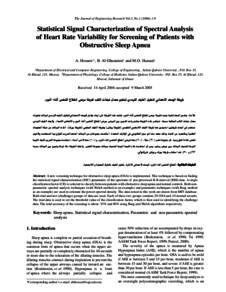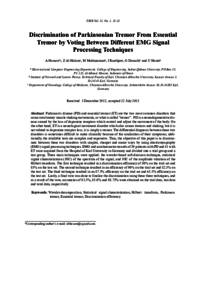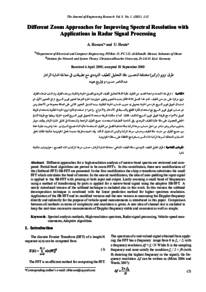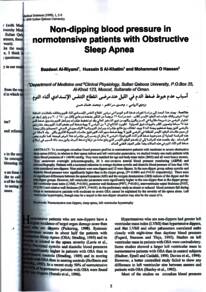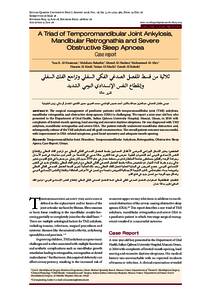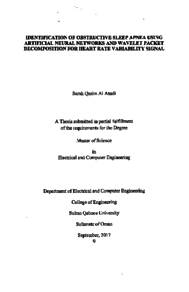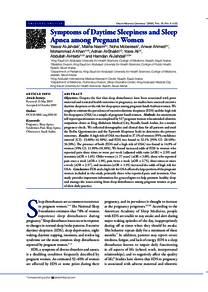Document
Statistical signal characterization of spectral analysis of heart rate variability for screening of patients with obstructive sleep apnea.
Contributors
AlGhunaimi, B., Author
Hassan, M. O., Author
Publisher
Sultan Qaboos University
Gregorian
2006
Language
English
Subject
English abstract
A new screening technique for obstructive sleep apnea (OSA) is implemented. This technique is based on finding the statistical signal characterization (SSC) parameters of the spectrum of pre-processed R-R-interval (RRI) data. A single classification factor (CR) is selected to classify between patients with obstructive sleep apnea and normal controls. Both nonparametric spectral analysis techniques (with Welch method as an example) and parametric techniques (with Burg method as an example) are used to estimate the power spectral density. The data tested in this work are drawn from MIT database. Both trial and test (challenge) groups of data are used. Each of these two groups contains 20 OSA and 10 normal records. The trial data is used to set the threshold value of the classification factor, which is then used in identifying the challenge data. The total accuracy of the screening is about 93% and 90% using Burg and Welch algorithms respectively.
Member of
ISSN
1726-6742
Resource URL
Citation
Hossen, A., AlGhunaimi, B., & Hassan, M. O. (2006). Statistical signal characterization of spectral analysis of heart rate variability for screening of patients with obstructive sleep apnea. The Journal of Engineering Research, 3 (1), 1-9.
Arabic abstract
يتضمن البحث تقنية جديده لغربلة مرضى انقطاع التنفس أثناء النوم. تعتمد هذه الطريقة على إيجاد عوامل الوصف الإحصائي لتحليل الطيف الترددي لبيانات متغيرات معدل نبضات القلب المعالجة مسبقا. تستخدم هذه الطريقة معامل واحد للتمييز بين المرضى بمرض انقطاع التنفس أثناء النوم والأشخاص الأصحاء. ولإيجاد الطيف الترددي نستخدم في البحث طريقتين أساسيتين هما طريقة الطيف اللامعلمي التقليدي (كطريقة ويلش) وطريقة الطيف المعلمي (كطريقة بورك). أخذت البيانات من شبكة المعلومات العالمية وبالتحديد من قاعدة بيانات معهد ماسا شو سيتز التكنلوجي في الولايات المتحدة. استخدمت مجموعتان من البيانات أحدهما لتدريب الخوارزمية المستخدمة والأخرى لفحص كفاءة الخوارزمية، كل مجموعة تضم (30) سجلا، (20) منها لمرضى انقطاع التنفس أثناء النوم، و (10) منها لأناس أصحاء. استخدمت مجموعة التدريب لإيجاد القيمة الحرجة لتصنيف البيانات بين مريض وسليم، ومن ثم استخدمت هذه القيمة الحرجة لتصنيف بيانات مجموعة الفحص. وأعطت الطريقة دقة غربلة وتمييز بين البيانات بنسبة 93% و 90% عند استخدام طريقتا بورك و ويلش على التوالي.
Category
Journal articles

